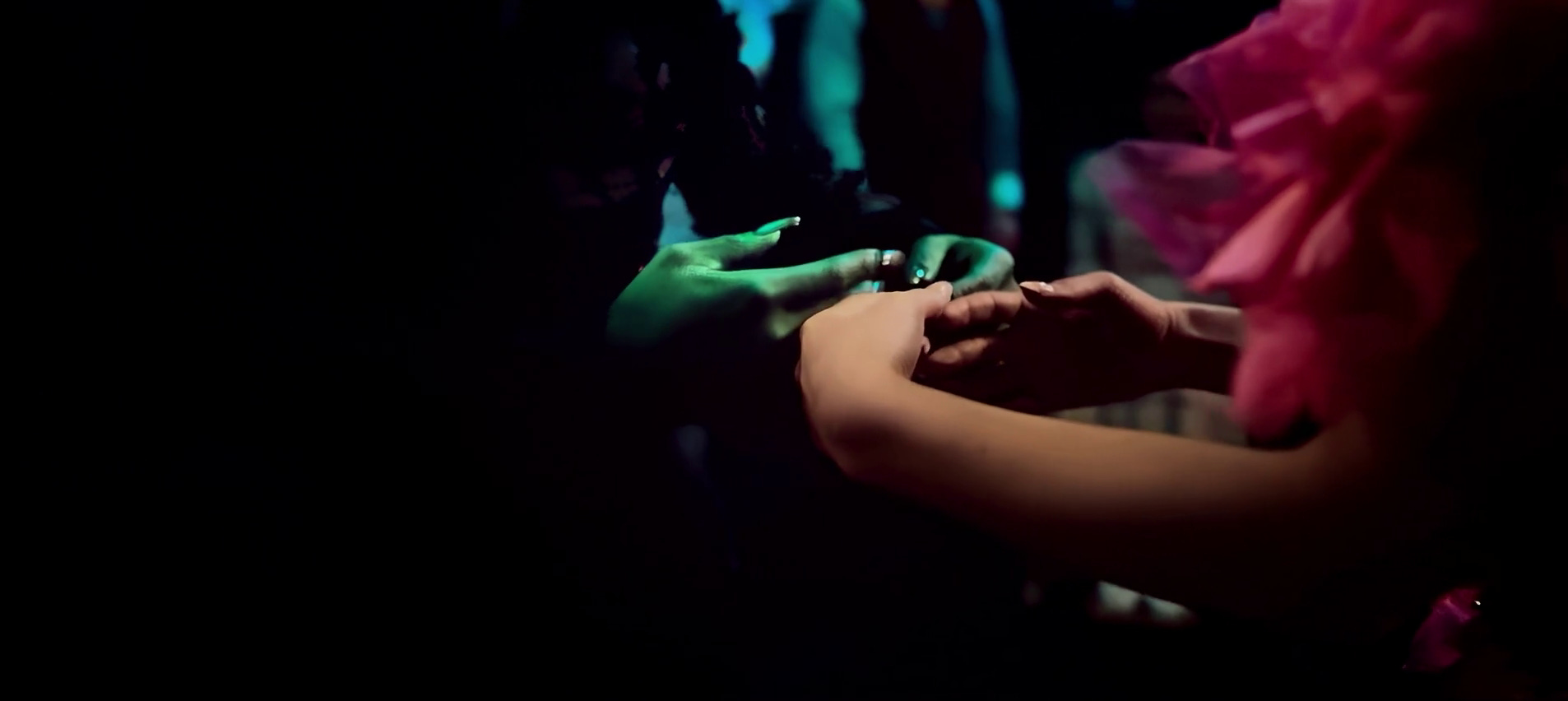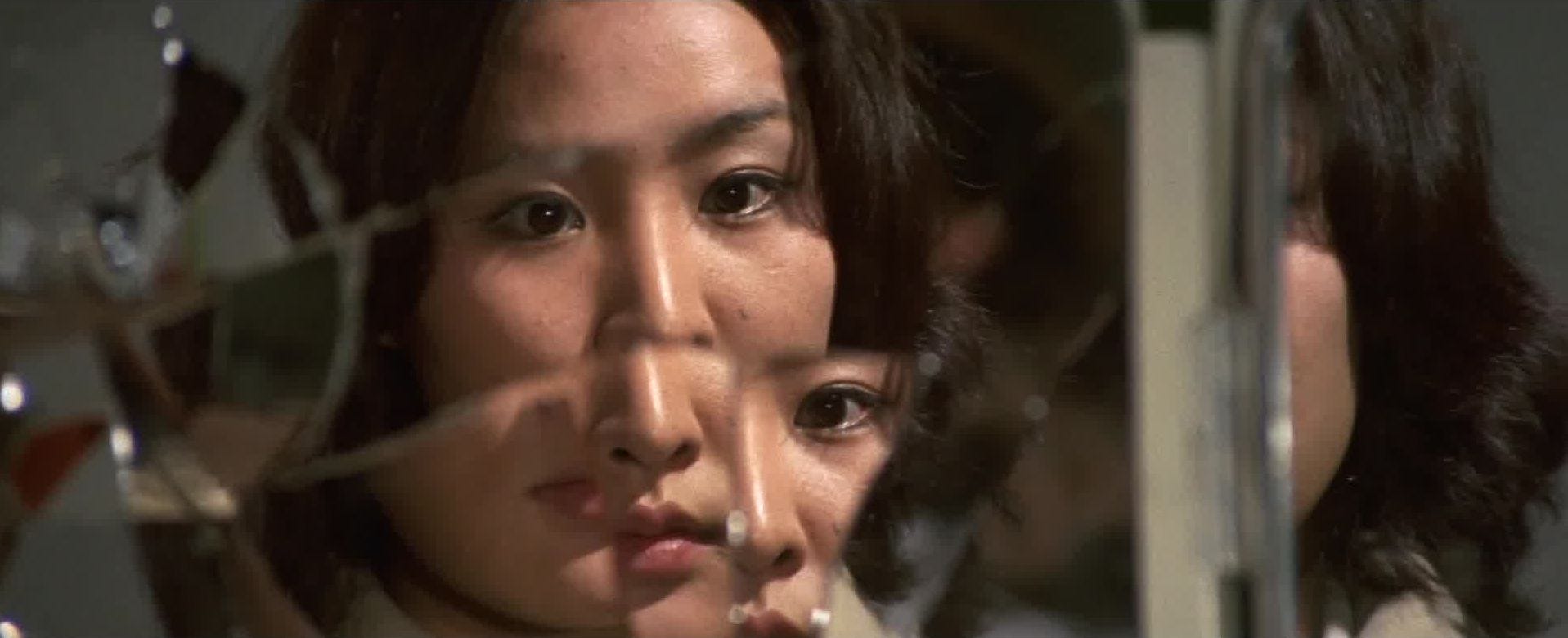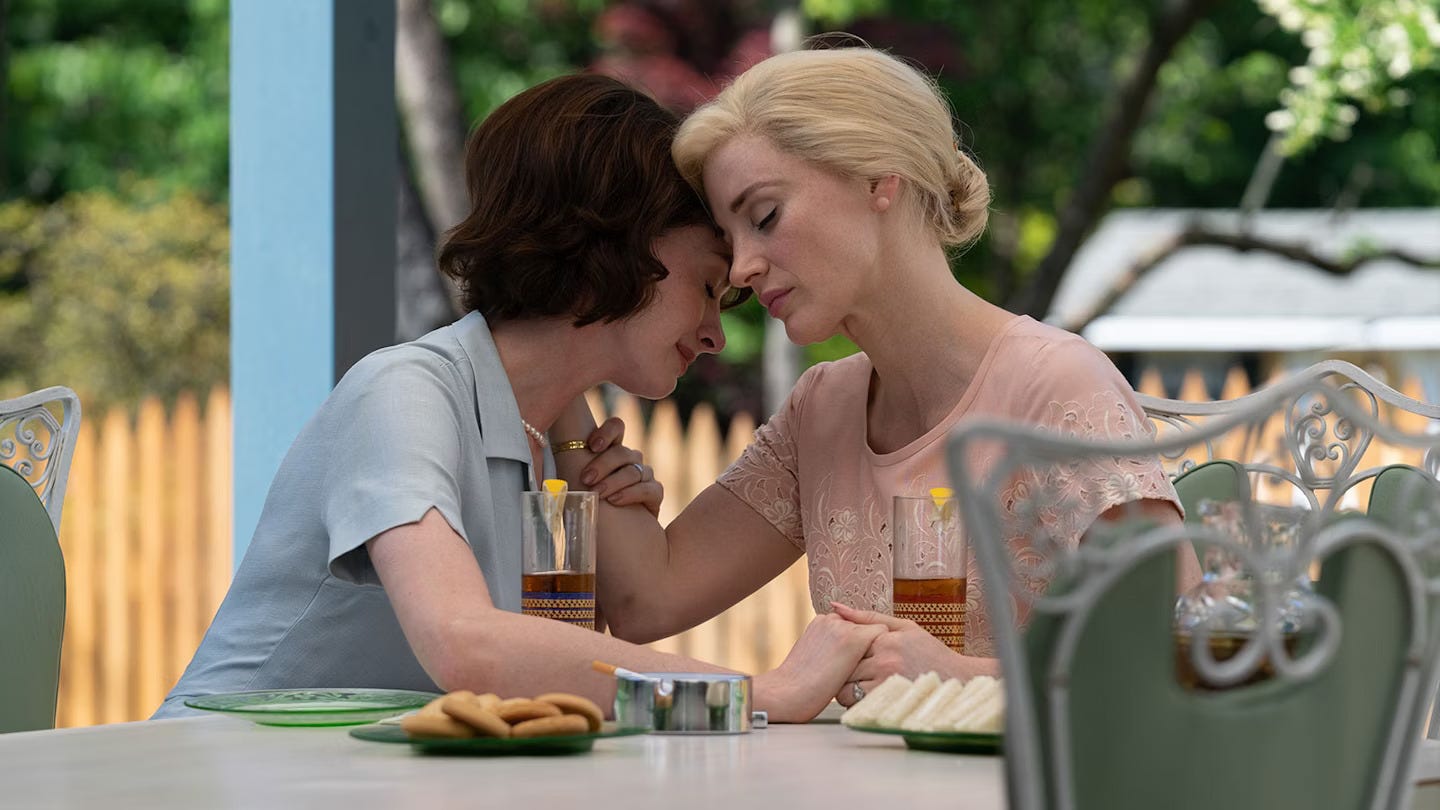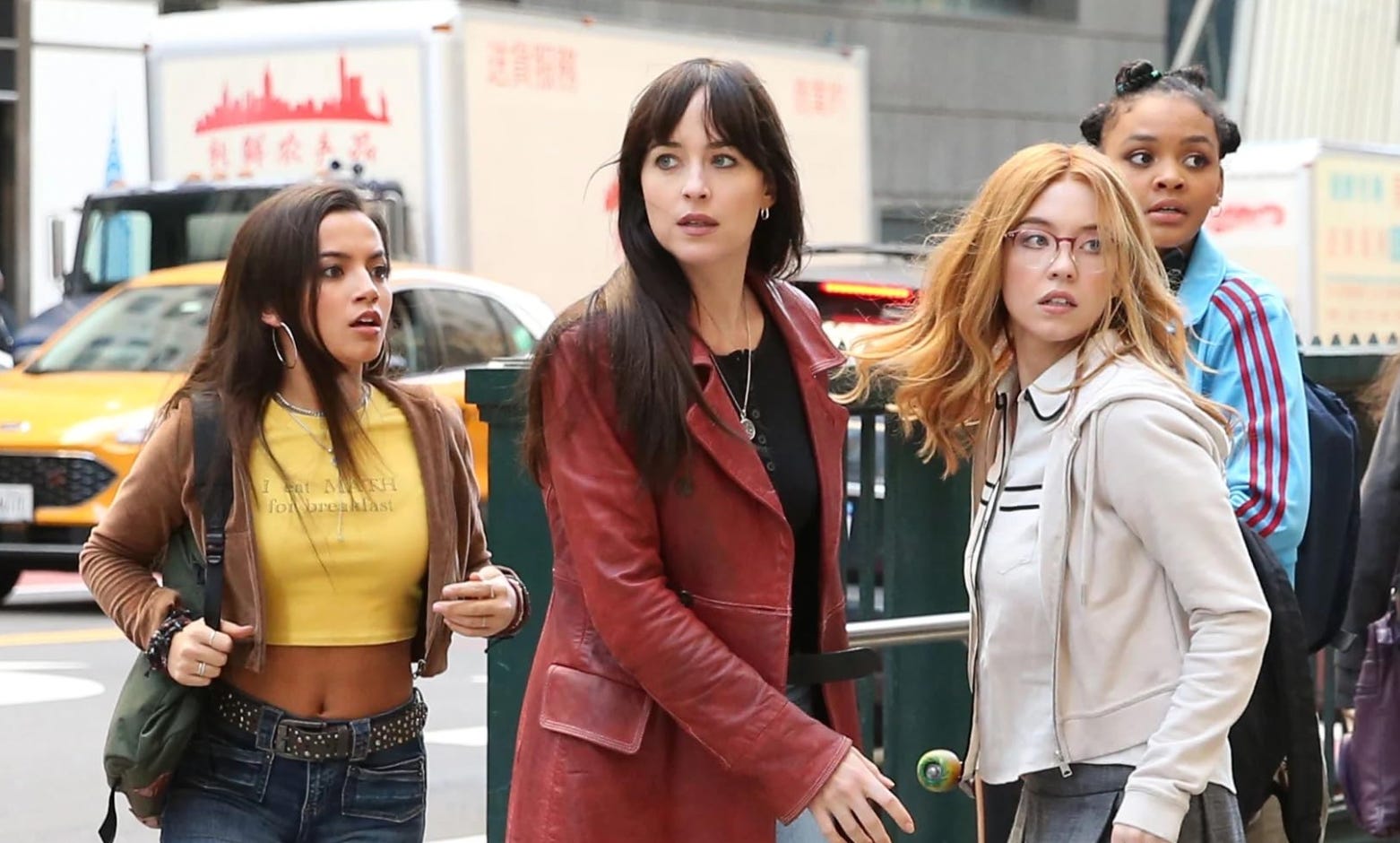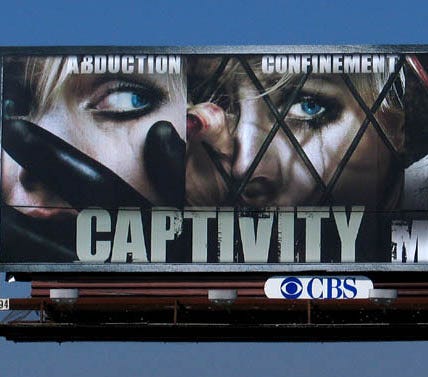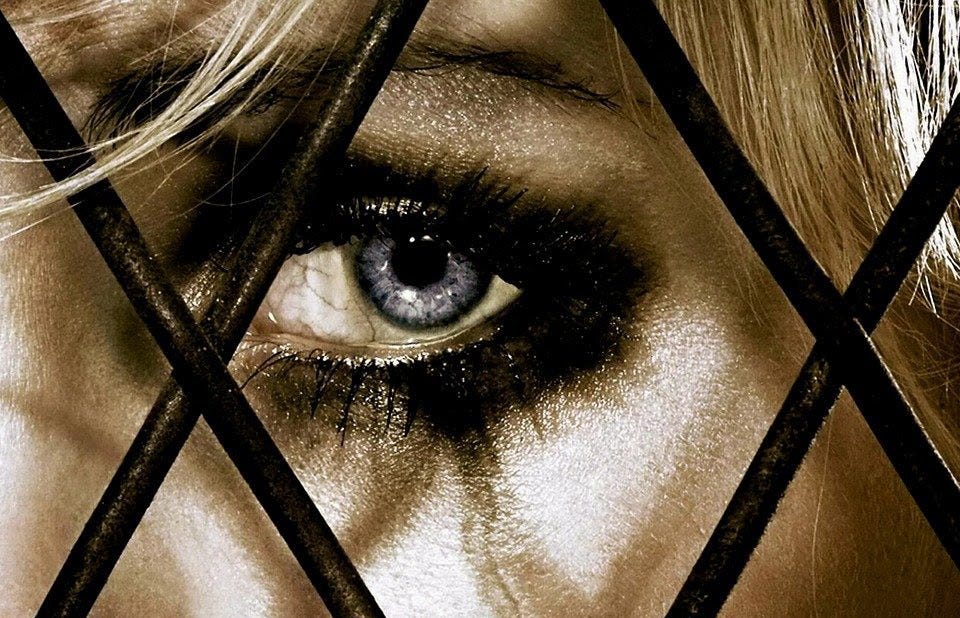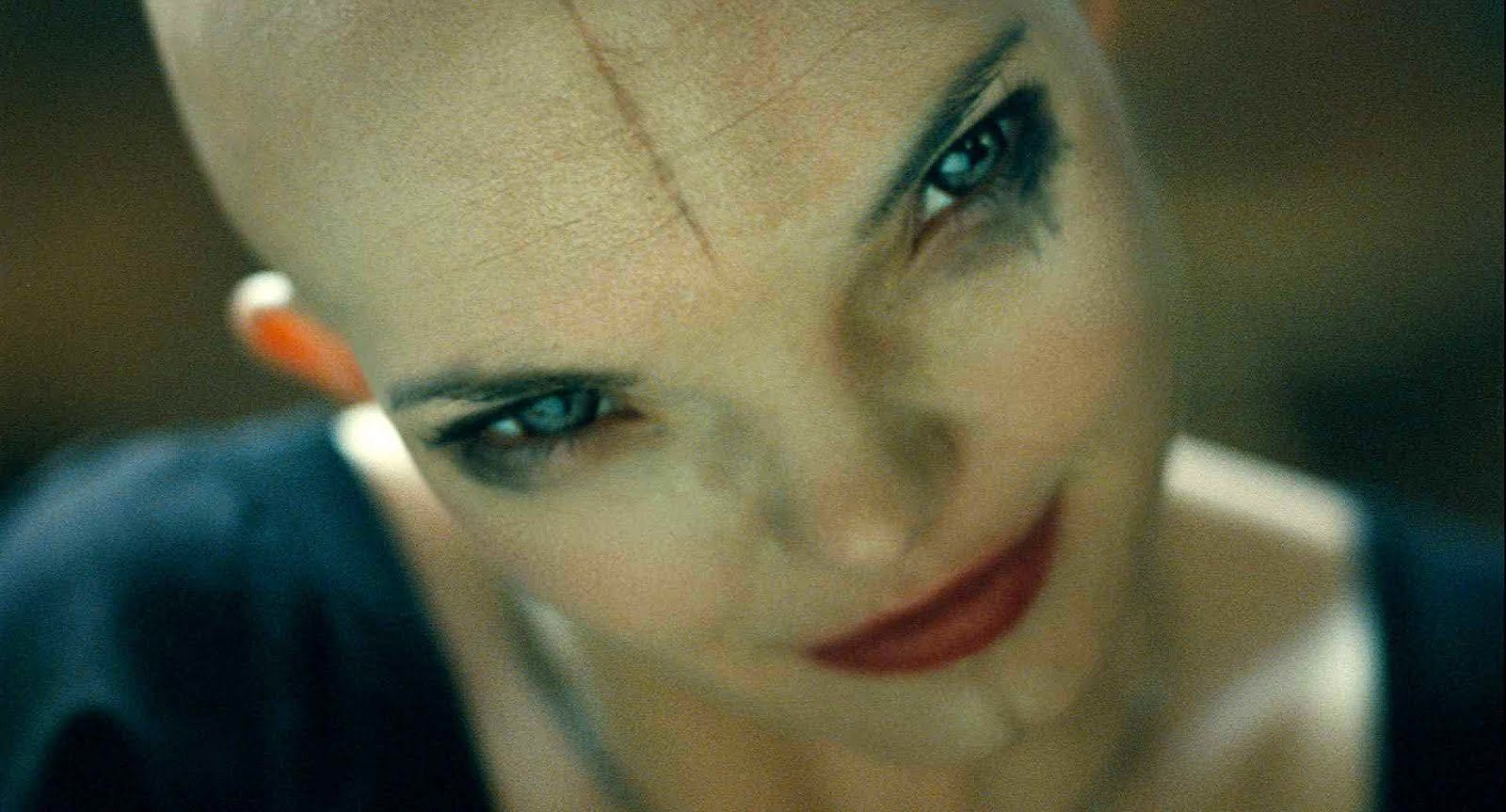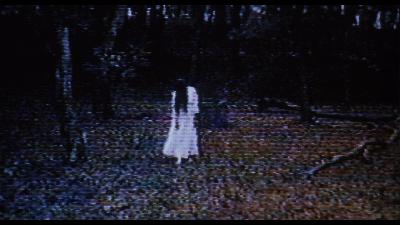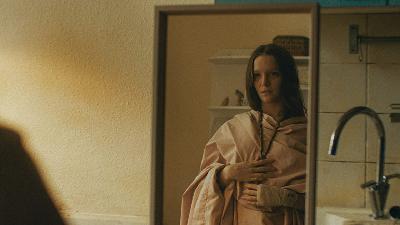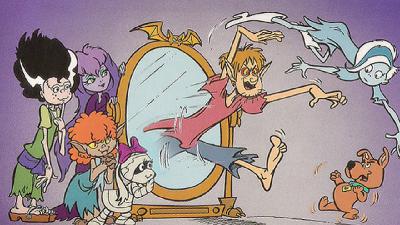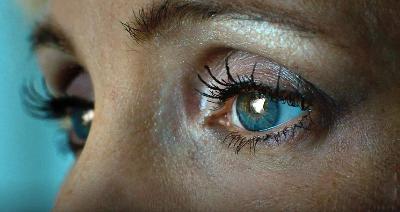Discover Cinema Cauldron
Cinema Cauldron

Cinema Cauldron
Author: madeline
Subscribed: 2Played: 0Subscribe
Share
© madeline blondeau
Description
audio essays and discussions on film feat. transgender menace Madeline Blondeau
madshaus.substack.com
madshaus.substack.com
21 Episodes
Reverse
in this episode: thoughts on “Wicked – Part One,” trans themes in Gregory Maguire's original text, and how Oz envisions ‘the other' set to witchy and magickal jazz from over the rainbow.opening music by Diego Nava.tracklist1. Oscar Peterson, "Witchcraft"2. Sonny Stitt, "It's Magic"3. Akira Yamaoka, "Witchcraft"4. Thelonious Monk, "'Round Midnight"5. Stan Kenton, "Over The Rainbow" Get full access to cinema cauldron at madshaus.substack.com/subscribe
In this episode, I’ll review Todd Phillips anti-sequel, Joker: Folie à Deux. Along the way, I’ll touch on Warner Discovery’s multi-year string of financial busts — and the future of big-budget film with mega-fans in the chair. Put on a smile and get happy — and welcome back to Cinema Cauldron.music by George Nascimento, Chris Botti, and The Starlight Orchestra.follow the show @ madshaus.substack.com Get full access to cinema cauldron at madshaus.substack.com/subscribe
After an opening scene of S&M that sees a rose stem refashioned as a whip, Nun In Rope Hell (1984) brings viewers to the Kadowaki Suspension Bridge. I recognized it as a climactic set piece in horror sequel Sadako 3D 2 (2013), but it’s also been featured in Koji Shiraishi’s Occult (2009.) Located in the Shizuoka prefecture, the bridge is suspended right above the Jogasaki Coast. Both from the side and on the bridge itself, the view is astonishing – albeit somewhat terrifying.This is an appropriate setpiece for director Katsuhiko Fujii and cinematographer Teio Noda to open on. Nun In Rope Hell is as mystifying as it is scary – and twice as erotic by any measure. Fujii pushes major boundaries for not only what a theatrical pink film could show by 1984, but the limits of contemporary rope play. Through artful shot composition and imaginative mise en scene, the film elevates the human body to a work of art in sublime form. Like the Kadowaki Bridge, the weight of this picture rests on the suspended backs of the actresses.Rope Hell surprises in how it avoids general nunsploitation stock tropes and scenarios. There are no horny priests or arcane rituals in the name of a Christian god figure. Miki Takakura plays a girl who wants to start fresh, after she’s caught making love to a married man. But she soon realizes that the institution is a front for a writer’s perverse fixations, and that the ‘nuns’ are all being secretly coerced into sex via drugs each night.By this point in the Roman Porno release cycle, a pure sex and bondage picture like this – no enemas or bodily fluids outside of a mouthful of fake sperm – might seem tame. But Fujii, Noda, and production designer Shuuko Goto remind viewers how far rope and some candles can truly go. In one scene halfway through the film – where the narrative truly turns – Takakura is suspended in pure darkness, then bound from head to toe in striking white rope. Her breasts are squeezed and contracted by the bindings; she writhes, but can’t move. Then she awakens inside a car – no less trapped. Each of her four limbs is tied to the vehicle’s grab handles, her body forcibly stressed and suspended. A dreamic nightmare morphs to a waking one in real time, as the viewer scrambles to keep up as they’re led deeper into depravity.A scene like this is quintessential pink film 101. First, we are treated to a heightened, emotional state of being for the female character – a howling yet vacuous unreality. It’s here that she’s bound, unaware of what’s happening or who’s doing it. This surreal moment is meant to signify her being tied while unconscious. At once, this short sequence is a bit of non-literal storytelling, a dream sequence, and a showcase of careful ropework. When she awakens, the scene becomes real – suddenly, we’re aware that this isn’t a dream, and are trapped in the car with her. Without words, we’re invited to think of the possibility of a badly timed traffic stop or hitting a wrong police trap. What’s erotic about this isn’t just that a oman is being tied up and displayed against her will – it’s the fact that this is being done in the back of a car you might pass on the highway.A major preoccupation in pink film is the concept of perversion that exists just beneath the surface of polite or popular societal norms. In that sense, much of the genre not only has a spiritual kinship with giallo, but with works like David Lynch’s Blue Velvet as well. Fellow Roman Porno entries White Rose Campus and Woman In A Box both indulge in this not-quite public sex involving vehicles. In the former, a group of hijackers takes a bus of schoolgirls hostage and rape the remaining students after they kick out ‘the ugly ones.’ In the latter, an indulgent couple have sex and spy on unsuspecting potential victims to drug and torture in their basement. These films demonstrate the preoccupation both audiences and creatives had with socially unacceptable acts being done just barely out of public eye.This fits handily with Rope Hell story writer Oniroku Dan’s conception of BDSM. Dan was one of the originators of what is now conceived of as ‘Japanese S&M’, a style of sadomasochistic play with many distinct characteristics that differentiate it from its Western counterparts. As Dan conceptualizes it, BDSM is focused on shaming and embarrassing beautiful subjects by wresting control and forcing their desires from them. It’s explicitly preoccupied with forcing the recipient to acknowledge that they want and like it.This Dan quote, from a 1999 interview with Asian Cult Cinema, is a succinct summary of the author’s approach.My book editors often confuse S/M with cruelty and they want me to write some 'punishment tale' for them. This type of story is out of my realm. It just gives me the creeps. Rather, my concept of S/M is 'distorted sexual desire' or extreme disorientation. It's a male fantasy derived from love... from seeing a beauty suffer through the sense of shame. Therefore, my style contains a romantic, aesthetic, and sometimes decadent fragrance."This philosophy, built around resistance giving way to one’s innermost desires, is one which dates back to Japan’s colonial enterprises in the first half of the 20th century. It evokes Imperial Japan’s relegation of Korean art, culture, and history as lower than Japan’s own heritage. Through propaganda, the political institution of shinto, and forced reeducation en masse, the Japanese government aimed to assimilate the Korean populace by force – even using forced sex labor to achieve this. Behind this treatment was a plainly stated tone of paternalistic patronizing – the presumption that colonized Koreans ought to be grateful for this treatment. This was based on an erroneous and fanciful understanding that Korea was, in fact, a less evolved, more primitive relative of Japan.Says Yi Wei in the Yale Review of International Studies,In the early 1910s, Japanese intellectuals continued the process of knowledge production to legitimize its hold on Korea. Similar to the ethnographic works, portions of these works stressed a simultaneous sameness and difference between Japan and Korea. For instance, as shown in Do-Hyun Han’s work on colonial religious governance, Shamanism was framed as the dominant Korean religion. Japanese colonial scholars argued that Korean Shamanism was a primitive branch of Japanese Shintoism. They argued that in terms of religion, Korean was “below Japan on the evolutionary stage of civilization.” This epistemic installation of Shamanism as the dominant Korean religion showed the workings of the Japanese colonial ideology. This “knowledge production,” as Wei defines it, was a cornerstone to the economic, political, and religious annexation of Korean by the Japanese military. But though a great number of Koreans were claimed by forced labor, torture, or outright murder, this was not a passive occupation. Collectives formed to push back against the new rule, and though initial resistance was met with over 700 military arrests, Koreans did not stop fighting for not just their independence, but the survival of their culture and history itself.As Erin Blakemore writes for History,Though Japan occupied Korea for an entire generation, the Korean people didn’t submit passively to Japanese rule. Throughout the occupation, protest movements pushed for Korean independence. In 1919, the March First Movement proclaimed Korean independence and more than 1,500 demonstrations broke out. The protests were brutally suppressed by the Japanese, but not before the desire for independence swept through Korea. As this pertains to Dan’s conception of BDSM, then, a parallel can be drawn between the writer’s female characters and Colonial Japan’s conception of Korea. In both instances, there is an inherent belief that the colonized body is receiving what it truly needs and desires against its will. Dan’s work, however, tends to stray far from fascist beliefs or tendencies – though that’s not an absolute rule – and adaptations of it tend to use this power struggle to tease out insightful, incendiary imagery explicitly critical of nationalism.This is present in Nun In Rope Hell, mainly embodied by smug antagonist Bunzo. Played with confident swagger by Hiroshi Unayama, the writer displays two-way mirrors in his home alongside traditional artwork and scrolls. In a clean, ironed kimono, he walks around his home and observes a woman being raped as if it was a work of art being hung on his wall. The satire here is overt, and it’s a strain of dark comedy echoed by previous Dan works like Flower and Snake. In this strain of dark comedy, the conservative traditionalist’s fine tastes are likened to forced submission brought about via sexual violence. Further, the audience is made complicit in the act on screen, which itself is a conscious utilizing of bystander effect to render viewers helpless, shocked, but nevertheless entranced.The film presents something an ostensible traditionalist would be offended by, then likens their fixation on national identity to a fetish. That genre of commentary can also be seen in the decadent, perverse rich countryside dwellers of Obayasu’s House, or in the second Guinea Pig installment, Flower of Flesh & Blood. A central preoccupation of post-60s Japanese film – especially after the popularity of Teruo Iishii’s 1968 Shogun’s Joy of Torture – is the destabilization of national hegemony through subversive and decadent art that does not outright state what it is commenting on. Instead, directors relied on coded visual metaphors and prospective audiences’ context – much like European film of the time, especially French cinema – to get across the full weight of their messaging.In the context of Rope Hell, the Catholic Church in Japan is likened to a perverse farce without a single critical word spoken of religion. Instead, a rapacious writer destabilizes a convent by sheer force of will, and rewrites the focus as one strictly built around sex. M
Showing rape is a taboo in film. But when it comes to breaking this taboo, Japan does it very differently than the rest of the world. On this episode, Madeline discusses 'Rape!', a 1976 Nikkatsu Roman Porno written by 'House' scribe Chiho Katsura. Along the way, she discusses the depiction of sexual assault in film - and why it matters.Music:Grant Green - 'Idle Moments'Diego Nava - 'Chill Bro' (Cinema Cauldron outro)Follow Madeline @ mads.haus on Bluesky or at madshaus.substack.com Get full access to cinema cauldron at madshaus.substack.com/subscribe
Mothers' Instinct arrived to Netflix this past week with little to no fanfare. In fact, its theatrical release went mostly unnoticed. But this quiet 1960s thriller starring Anne Hathaway and Jessica Chastain dishes up some worthwhile commentary with style to spare. Listen in to find out how.follow me on BlueSky @ mads.hausfollow my Substack @ madshaus.substack.comEpisode music from Nature's Eye and Serge Quadrado.Outro track, "Chill Bro," by Diego Nava. Get full access to cinema cauldron at madshaus.substack.com/subscribe
On the 30th episode of Cinema Cauldron, Madeline mines "MaXXXine" and the rest of Ti West's "X" figure for dark truths about the seedy underbelly of the American Dream. Plus: 'The Goddess,' Anna Freud, and the death of Norma Jean Baker. Get full access to cinema cauldron at madshaus.substack.com/subscribe
Madame Web does not give superhero audiences what they want.It does not meet the expectations for a good comic book movie, by the classical definition. At no point does the film feel like an A-to-Z origin story for any of its characters. The craft is not here to support a linear, plot-driven script meant to introduce, develop, and embattle a central hero. On multiple levels, it fails to adapt the source material in any way that resembles anything close to its source material. As if to drive the point home, its star -- the titular lead -- is running a press tour that showcases how little she knows (or cares to know) about the franchise.These are all good things.Disney has conditioned us, over the past decade, to be content with a certain mode of superhero storytelling. It's a mode that was established by Spider-Man (2002) -- the superhero monkey bars so many are still jumping towards. That film has lost its gossamer glow in recent times for me, as in hindsight, it's a simplistic and reactionary piece of post-9/11 puffery. Yet its rote structure still hangs heavy over each new superhero release, as Peter's "zero to hero" timeline is repeated ad nauseum by several films from multiple studios over two decades. By the time Warner got to Blue Beetle, I started to wonder how many millions were spent on weaving this same translucent web.These sorts of origin tales only take an issue or two in comics. Well, okay -- nowadays, it takes a crossover, a six-issue limited, a team-up run, and then a solo series to really set a character up. (See: last year's excellent Hawkgirl.) Market demands, you know? But even then, as a weekly comic reader, these things take 5-10 minutes to read circa 2024 -- tops. Older comics were much wordier, but the action-heavy stylistic evolution of the '80s and '90s coupled with the explosion of manga means mainstream comics are simpler to read than ever. No two-dollar words in sight!So -- I ask you -- why do we want to see that for two hours? It's a question I kept coming back to after The Flash, which is a cape flick that gets it right thanks to Andy Muschietti's deliberate queering and inversion of an "origin story." That picture makes smart use of time dilation and multiple "realities" to simultaneously develop and introduce a character. It's a stroke of cleverness that feels like both an evolution of the Barry from Snyder's League and the origin of a totally new character. Then -- by the end -- even that has been toyed with and challenged in some way by the continuity-smashing climax.Madame Web, as it turns out, has similar tricks up its sticky sleeves. But where The Flash toyed with timelines and flirted with fractured futures to deliver a sobering story of letting go and moving on, SJ Clarkson's picture uses them to much different effect. Far from a would-be crowdpleaser, her film instead casts its titular (anti)-heroine's clairvoyant web to weave connective tissue to anxiety and depression -- things lead actress Dakota Johnson struggles with publicly. Seeing the future -- all possible outcomes of it -- encumbers and overstimulates her. Peter Parker, Miles Morales, Gwen Stacy get all the fun of spider powers with the web-slinging and wall-crawling. Cassie Webb, however, gets a mental illness.Mental illness is the most useful lens to view Madame Web through. Most of its social situations are direct parallels to scenarios people with trauma and depression have found themselves in. The most cogent one of these is early on, during the baby shower for Mary Parker (Emma Roberts, inexplicably.) During a stiff round of party games, she reveals that her mother died during childbirth when prompted to talk about her. The air goes flat. Everybody gets uncomfortable. Even as Cassie tries to mitigate her pain, the rest of the party looks at her as an outsider.Then -- her powers flare up. She flashes forward a few moments prior, during a name-guessing game for the baby. Time snaps back, and when prompted, she asks, "didn't we already do this?" It's a line with dual meaning. On the surface, Cassie is referring to the time slip. But on a different level, she's also referring to the party itself -- an impatience with how banal and repetitious this all is to her. It's a situation that anybody with mental illness who's been roped into a social gathering they didn't ask for can relate to. Time seems to skip around a flat circle for a whole evening, as people look at you weird and wonder why you're "like that."Little moments like these help distinguish Madame Web from the over-busy narrative hyperactivity of the Spider-Verse installments, especially the unfocused 2nd picture. Even without the script telling us, "Cassie feels disoriented and put off by her strange new abilities," it manages to communicate that with honest and relatable social scenarios with easy parallels. In that sense, it's a great capitulation of the spirit of Amazing Fantasy #15, where Peter Parker acted as a cautionary fable for overzealous bookworms who fantasized about beating up their bullies. Even Spider-Man (2002) managed clever double speak for hormonal puberty -- remnants from James Cameron's early draft.This matters when the lay of the land is plot first, subtext later. One of the Marvel Cinematic Universe's biggest weaknesses is in leaving the thematic substance on the cutting room floor. Outside of rare examples -- the tremendous Black Panther and Eternals, for instance -- many of the pictures are squarely focused on exposition and comprehensible, plainly stated messaging. In that sense, they are truer to certain eras of comics than perhaps fans are willing to admit -- you see a lot of that same obvious storytelling in Busiek's Avengers, which had a heavy influence on those early "Phases".(Can we please stop calling them that?)Madame Web isn't as much. But when it does stop to try and explain things, it's where the web starts looking a little extra translucent. There are awkward, shoehorned moments where Cassie pries Ben (Adam Scott) about his love life, or where Mary Parker (Emma Roberts) is about to drop the name of her baby only for a balloon pop to spoil the reveal. Presumably meant to be clever continuity weaving, these instead stand out as jarring bits of obviousness. The script grates when it tries to remind us that this is a Spider-Man picture, and that -- yes -- Spider-Man is really here, everybody. I wish S.D. Clarkson and the three other writers had taken cues from Venom and simply not acknowledged the connection, but who knows if Sony would've let them?Because it's that very connection which actively undermines the film. Intended to land as an analogue for navigating the world as a woman with neurodivergence and trauma, it's stymied by its insistence on the Peter Parker proceedings. We are reminded at the beginning, mid-point, and climax that Peter is a fulcrum on which this world pivots. Cassie doesn't get to matter because Cassie matters; Cassie gets to matter because she saved Peter Parker's life, in service to The Canon. Before she's even given the chance to grapple with her two new disabilities at movie's end, we already know that she's important because she saved Spider-Man.Well -- that's only half of it. The other half is the saving grace of the film, in the form of three principal leads. Sydney Sweeney, Isabela Merced, and Celeste O'Connor are inspired as the three central 'Spider-Women,' and each bring a specific je ne sais quoi to their roles. Sweeney is particularly great as timid, awkward Julia, who embodies a femme riff on pre-spiderbite Petey. It's a markedly different turn from her attempt at a mumbly sexpot in Anyone But You, which didn't particularly work for me. But she's fantastic here, and I wish we'd get her get a feel for the character more in a follow-up. Alas.That goes triple for Merced and O'Connor. Merced takes on a personal favorite aughts Marvel addition as undocumented teen Anya. Anya is best known for not only the Arana: Heart of the Spider series, but for her turn as Spider-Girl after 'Mayday' Parker. While Merced isn't given any of the tokusatsu-tinged theatrics of her comic counterpart, her character is sufficiently developed and she puts plenty of honest emotional heft into the performance. Meanwhile, O'Connor provides the skeptical wisecrack of the group as Mattie, and has a lot of fun with the role. She brings a sardonic forthrightness to the character that helps define the group as more than passive bystanders.(Plus -- I'll always like the cool skateboarder girl in any picture like this!)This trio spins a loom around Madame Web's hemorrhaging heart. They are the emotional core of the film, and why Cassie is forced to challenge her stand-offish, detached attitude towards life. In them, she finds something to fight for and protect in the face of evil they can't yet comprehend. It's the portion of the picture that really works for me. There's a genuine sweetness to their fast friendship, and when the film gives them time to breathe, it sings. A particular highlight is a CPR 101 sequence set in a hotel room, which takes place after Cassie flirts with the possibility of leaving the girls alone. It's a segment of uninterrupted chemistry between the cast, and something the entire enterprise could use a lot more of.It's worth noting Madame Web is set in 2003, and there are plenty of little period nods. American Idol, era-accurate Pepsi, the works. (From Justin To Kelly is nowhere to be found!) The era is most embodied, however, in that core feminine energy of the picture. Certain sequences evoke Crossroads or Coyote Ugly or Uptown Girls -- those early aughts 'chick flicks' centered around women's solidarity and sisterhood are conjured here. While moments like an impromptu table dance may seem like obvious pandering written by two guys... aughts teens were crazy, y'all. It was a terrible time for America, and that was reflected in the unfettered risk-seeking, careless nature of era teens. Ev
My thoughts on Mean Girls (2024,) the state of the modern musical, and the surprising queerness of Tina Fey's musical remake.read my full review @ mads.haus and Substacksubscribe and support the show @ Substackmusic by Diego Nava Get full access to cinema cauldron at madshaus.substack.com/subscribe
Captivity & the Death of 'Torture Porn' - Part 3 of 4 16 years ago this month, Captivity's billboards sparked outrage across America. In this episode, I'll discuss the film's notorious reshoots, its controversial marketing, and how Six Feet Under producer Joey Soloway doomed the film's chances at success. Plus: where did the term 'torture porn' come from - and was it a fair label or misguided alarmism? follow my Substack! follow my Cohost! follow me on Twitter! Music Credits Diego Nava – “Last Day” Sergio Quadrado – “No Flower Land” Onion All Stars – “Lulled To Sleep” Free Groove – “Seduction Jazz” Azinity Music – “All My Love To You” Trygve Larsen – “Remade Paths” Onion All Stars – “Jazz In A Gentle Coffee Shop” Get full access to cinema cauldron at madshaus.substack.com/subscribe
Moscow, Turistas, and After Dark Films In this installment: Captivity's complicated Moscow production, the controversy surrounding Turistas, and a closer look at producer Courtney Solomon's After Dark Films. Plus, a taste of true crime as I discuss the real-life murder of Andres Ramos Bordalo - and how Fox Atomic used it to promote Turistas. Follow me on Twitter! Follow the show on Twitter! Subscribe to my Substack! Music Credits Lost European – “Images (No Vocals Version)” Angelwing – “The Nymphaeum Part V” Ketsa – “Magic Gardens” OB-LIX - “The Spell” Ashot Danielyan – “Meditative Middle Eastern Flute” Get full access to cinema cauldron at madshaus.substack.com/subscribe
Abu-Ghraib, Saw, and America’s Love Affair With Torture In this episode, I'll provide a brief overview of the controversy surrounding Captivity (2007) and trace its early origins as a Hype Williams project for 20th Century Fox. Then, I'll trace the correlation between America's fascination with torture, Iraq War era propaganda, and the anti-torture messaging in Saw, Saw II, and Saw III. part one of a four-part series; full essay transcript to be posted with feature-length edit Music Credits Hiromi Mizutani, "Greenvale" from Deadly Premonition (2010) Alexander Nakarada, "Hor Hor" Diego Nava, 'Chill Bro' (Intro & Outro) NeverNotDead, 'The Wait' Alex Guilbert, 'Ambient 1, 2, & 3' from Saw: The Video Game (2010) Get full access to cinema cauldron at madshaus.substack.com/subscribe
Vincenzo Natali's (Cube) 2009 sci-fi horror film, Splice, rattled the nerves of the few that saw it on release. It was bloody, sexual, and - above all - had scary things to say about American parenting culture. Today, I'll revisit Dark Castle Productions' first flop and consider some of the themes at play. Is the film's lukewarm reputation deserved, or is there something here worth probing deeper? CW: CSA, Abuse, Sexual Assault follow Madeline @VHSVVitch follow the show @cinemacauldron please consider leaving a tip on Ko-Fi! Get full access to cinema cauldron at madshaus.substack.com/subscribe
I Spit On Your Grave is one of the most controversial films ever made. On this episode, I'll briefly discuss the history of the original and its infamous reception. Plus: I'll walk you through each entry of this notorious franchise - and make my case for it as a feminist horror masterpiece. Support the show on Ko-Fi! Follow Madeline on Twitter @VHSVVitch! Read this episode's script - plus sources, films watched, and music credits - on Revue! Get full access to cinema cauldron at madshaus.substack.com/subscribe
This episode is dedicated to the memory of Nikki Kuhnhausen. Koji Suzuki's 1991 Ring introduced Sadako - an telepathic victim of a hate crime that, in her anger, doomed the world with a deadly curse. But over 30 years later, her origin story has been mostly forgotten. On today's Cinema Cauldron, I compare and contrast the various adaptations of Ring, discuss the origins and inspirations behind Sadako, and talk about how her original depiction mirrors real-life deaths of trans and intersex folks. CW: Murder, Sexual Assault, Transphobia. Music selections from Ring and Rasen. follow Madeline @VHSVVitch follow the show @cinemacauldron please consider leaving a tip on Ko-Fi! Get full access to cinema cauldron at madshaus.substack.com/subscribe
Rose Glass' gnostic chiller Saint Maud went unseen by most, and unsung by many. On this episode, we take a deep dive into the A24 gem, and address some of the little-discussed aspects of the movie. Included are discussions of Borderline Personality Disorder, the affect of Catholic doctrine on mentally ill queer folk, and an honest discussion on sexual assault. Help me buy better equipment on Ko-Fi! Follow Bella on Twitter @VHSVVitch Follow the show on Twitter @CinemaCauldron Episode includes excerpts from Welcome to the NHK and Neon Genesis Evangelion. Royalty-Free music by Ahjay Stalino, Francisco Alvear, Eugenio Minnini, Diego Nava Get full access to cinema cauldron at madshaus.substack.com/subscribe
This week, I'm joined my the illustrious Rocketto Punchi co-host, Russell Alterman, to discuss Scooby-Doo in the 1980s! We dive deep into three of the best Scooby films of all time: Boo Brothers, Ghoul School, and Reluctant Werewolf. Follow the show on Twitter @cinemacauldron Follow Bella on Twitter @vhsvvitch Follow Russell on Twitter @ Get full access to cinema cauldron at madshaus.substack.com/subscribe
After Roland Emmerich's Godzilla prompted a soft reset for the aging series, Toho took their most iconic creature for a five-movie trip down memory lane - and into the future. Rocketto Punchi co-host Preston McFarlin joins me this week to discuss Godzilla vs Megaguirus, Godzilla Against Mecha-Godzilla, and Godzilla: Final Wars. Follow Bella on Twitter @vhsvvitch Follow Preston on Twitter @robotechnology Follow + share the show on Twitter @cinemacauldron Get full access to cinema cauldron at madshaus.substack.com/subscribe
To talk about The Matrix Resurrections, we need to talk about The Animatrix and Enter The Matrix - two of the most important parts of the series. I dig deep into the franchise's philosophy, the idea of choice versus destiny, and why Niobe is one of the most important characters in the series. Enjoy. Word Count: 7,017 Music by Alejandro Magana, Eugenio Mininni, Arulo, and Diego Nava. If you like the show, please consider sharing it on social media to spread the word. Follow me on Twitter @VHSVVitch Follow the show @CinemaCauldron Subscribe to my Revue for episode scripts Get full access to cinema cauldron at madshaus.substack.com/subscribe
Last year was the worst. Let's talk about some of my favorite movies from it. That's right - a rote, standard Top 5... with a special announcement at the end. Sound good? Music by Brock Hewitt, Richard Smithson, and Walz. Opening track "Chill Bro" by Diego Nava Follow Bella on Twitter @VHSVVitch Follow the show on Twitter @CinemaCauldron Subscribe to the newsletter for scripts and more Get full access to cinema cauldron at madshaus.substack.com/subscribe
In the season of the spirit, I visit the sex-crazed Christploitation classic Evil Come Evil Go, where a Tammy Faye knockoff seduces lesbians and kills "evil men." Afterwards, I take a dreamy boat ride to Lesbian Island in Girl Slaves of Morgana le Fay and revisit Jose Larraz with his twisted slasher classic, Edge of the Axe. follow Bella on Twitter + Letterboxd @VHSVVitch follow the show + subscribe to scripts @ihatemoviespod Get full access to cinema cauldron at madshaus.substack.com/subscribe


